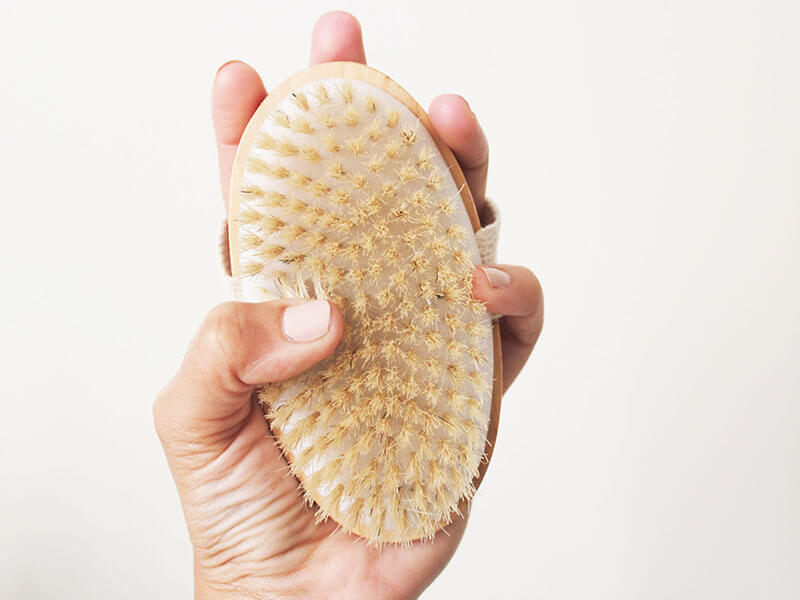Dry brushing is an ancient Ayurvedic practice that utilizes a natural-bristled brush to brush the skin from the extremities inward towards the heart to promote circulation and boost energy levels. This is done vigorously and firmly, though not to the point of causing pain or irritation.
What To Expect
Dry brushing will generally take place before your massage after you’ve disrobed. The practitioner will use both small circular motions as well as long strokes to brush your skin, starting at the feet and working their way up towards your core. The process only adds 5-10 minutes to your appointment, but the benefits are great. Should you experience discomfort, you can request that your massage therapist use a lighter touch. Dry brushing also pairs well with a back facial or body scrub services.
Benefits
Dry brushing benefits the lymphatic system by improving circulation and decreasing inflammation. The process of dry brushing is mechanically exfoliating to the skin without the risk of stripping away the body’s natural oils while encouraging new cell production. Dry brushing can also reduce cellulite by breaking up the fatty deposits underneath the outer layer of skin and encouraging a more even appearance. Dry brushing can support the lymphatic system by promoting lymph production, flow, and drainage. The lymphatic system is responsible for waste elimination and the removal of toxins from the body. Dry brushing can be deeply relaxing, offering a tactile experience that promotes a sense of well-being.
Contraindications
Dry brushing should not be performed on broken or inflamed skin. People with active eczema or psoriasis should avoid brushing over inflamed areas. Those with nerve conditions or sensitive skin may wish to forgo this add-on service, as it may be uncomfortable or even painful. Speak to your massage therapist about any concerns you may have prior to receiving this service.
Frequency
Dry brushing can be done 2-4 times a week at home and at every appointment with your massage therapist. Your skin may or may not tolerate frequent dry brushing. As an add-on service to a weekly or bi-weekly massage service, dry brushing should be safe and tolerable.
Aftercare
After receiving dry brushing as an add-on service, you will want to pay attention to how your skin reacts. Your massage therapist will be performing massage with oils following the dry brushing, so you don’t need to worry about applying more moisturizer until after you bathe next. Dry brushing can be done at home too! The process can dry out the skin. When dry brushing at home, it’s best done prior to your daily shower or bath so you can rinse away those exfoliated dead cells. Be sure to follow up with a moisturizer to replenish and rehydrate your skin.
